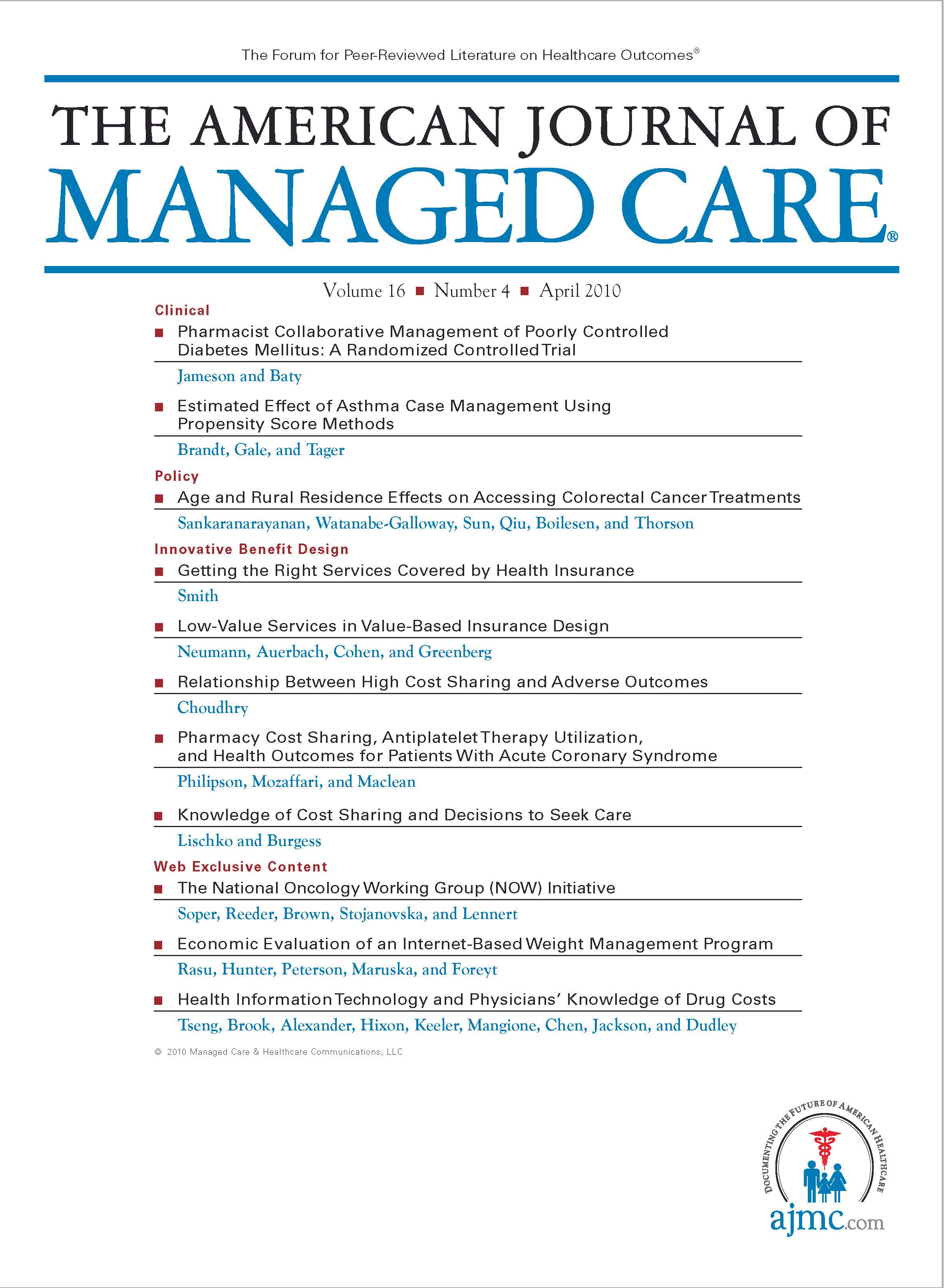- Center on Health Equity & Access
- Clinical
- Health Care Cost
- Health Care Delivery
- Insurance
- Policy
- Technology
- Value-Based Care
Low-Value Services in Value-Based Insurance Design
Building negative incentives into value-based insurance design programs to discourage use of low-value care will involve a number of challenges.
Objectives: To identify potentially low-value services for inclusion in value-based insurance design (VBID) programs and to discuss challenges involved in incorporating such information.
Methods: We searched the Tufts Medical Center Cost-Effectiveness Analysis Registry (www.cearegistry.org) to identify examples of low-value services, defined as interventions that make health worse without saving money or those that cost at least $100,000 per quality-adjusted lifeyear gained. We restricted our attention to papers published since 2000. We supplemented this literature review with a list of services recently rejected by the United Kingdom’s National Institute for Health and Clinical Excellence for coverage by the UK’s National Health Service.
Results: The list of potentially low-value services includes several drugs to treat cancer, as well as other therapies such as left ventricular assist devices and lung volume reduction surgery. Building negative incentives into VBID programs to discourage use of low-value care will involve a number of challenges, including identification of appropriate candidates; the scope of services to be covered (ie, whether VBID should be expanded beyond drugs to address medical devices, procedures, and diagnostics); and whether VBID programs should target specific subgroups.
Conclusion: Identifying noncontroversial low-value services and designing VBID programs to discourage their use will not be easy. However, to fulfill their promise of improving value and moderating cost growth, VBID programs should target low-value as well as high-value care.
(Am J Manag Care. 2010;16(4):280-286)

Trends in Hospital Pricing for Vulnerable Emergency Department Users, 2021-2023
December 4th 2025Self-pay emergency department prices rose significantly from 2021 to 2023, especially at for-profit and system-affiliated hospitals, highlighting growing affordability challenges for uninsured and underinsured patients.
Read More
Integrated Care for Chronic Conditions: A Randomized Care Management Trial
December 3rd 2025The authors sought to understand the differential impact of payer-led community-based care management approaches on stakeholder-oriented outcomes for publicly insured adults with multiple chronic conditions.
Read More

